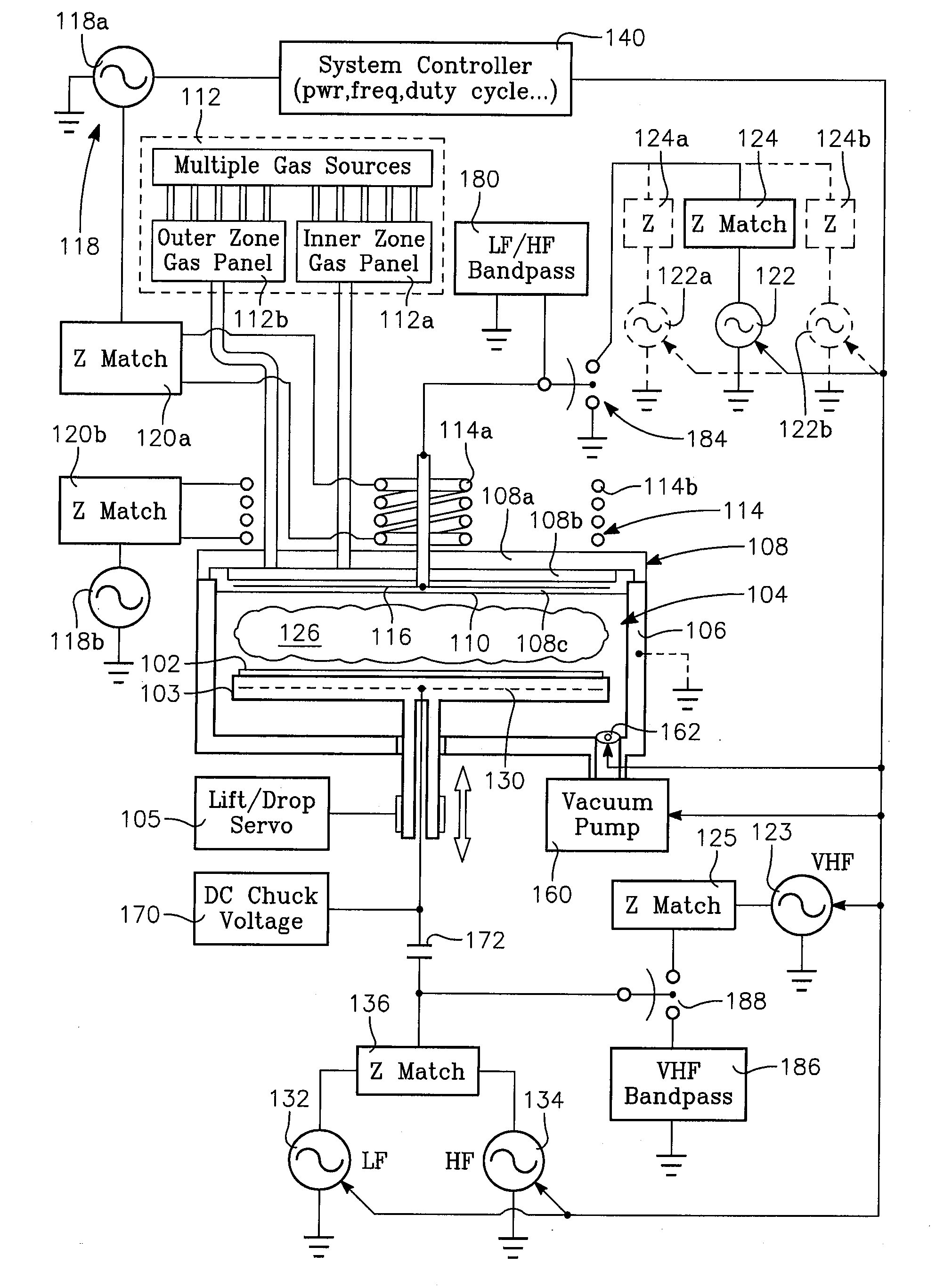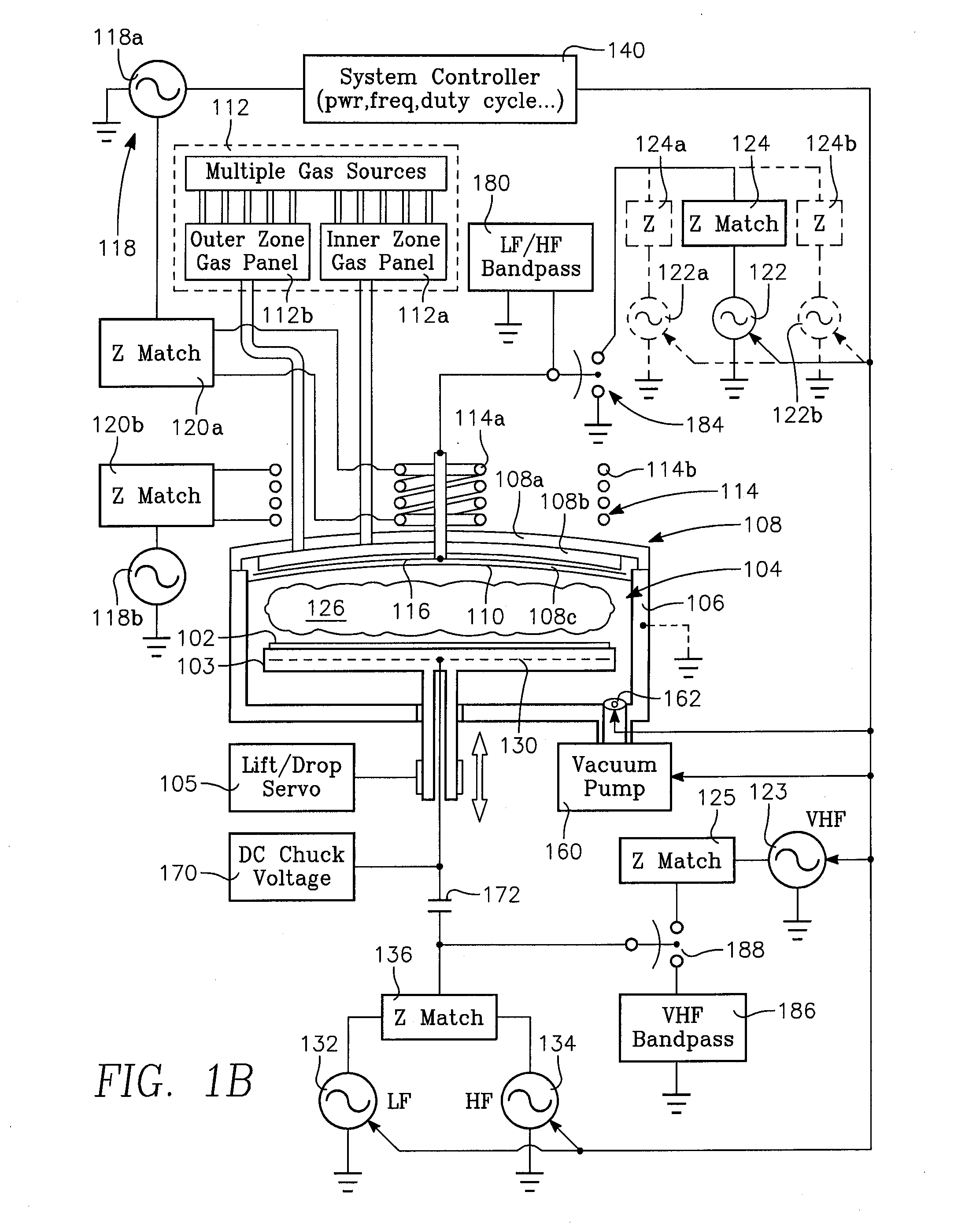Plasma process for inductively coupling power through a gas distribution plate while adjusting plasma distribution
a plasma process and plasma technology, applied in plasma techniques, fluid pressure measurement, instruments, etc., can solve the problems of uniform gas distribution, non-uniform plasma density, and inability to meet the requirements of production, so as to increase the reaction rate and etch rate, increase the dissociation in the plasma, and increase the ion density
- Summary
- Abstract
- Description
- Claims
- Application Information
AI Technical Summary
Benefits of technology
Problems solved by technology
Method used
Image
Examples
third embodiment
[0053]The RF power generator 118 (or the generators 118a, 118b) provides high frequency (HF) power (e.g., within a range of about 10 MHz through 27 MHz). In one embodiment in which the ceiling electrode 116 is the capacitively coupled source power applicator, an RF power generator 122 provides very high frequency (VHF) power (e.g., within a range of about 27 MHz through 200 MHz) through an impedance match element 124 to the capacitively coupled power applicator 116. In another embodiment in which the bottom (workpiece support) electrode 130 is the capacitively coupled source power applicator, an RF power generator 123 provides VHF power through an impedance match element 125 to the bottom electrode 130. In a third embodiment, both the ceiling and bottom electrodes 116, 130 comprise the capacitively coupled plasma source power applicator, so that both VHF generators 122, 123 are present. In a further embodiment, both electrodes 116, 130 are present, but VHF plasma source power is app...
first embodiment
[0056]In the first embodiment, VHF power is applied only to the ceiling electrode 116. In this case, it may desirable for the workpiece support electrode 130 to function as the return path for the VHF power applied to the ceiling electrode 116 and for the ceiling electrode to function as the return path for the HF power applied to the workpiece support electrode 130. For this purpose, the ceiling electrode 116 may be connected through an LF / HF bandpass filter 180 to ground. The bandpass filter 180 prevents VHF from the generator 122 from being diverted from the ceiling electrode 116 to ground. Similarly, the wafer support electrode 130 may be connected (via the RF isolation capacitor 172) to ground through a VHF bandpass filter 186. The VHF bandpass filter 186 prevents LF and HF power from the generators 132, 134 from being diverted from the electrode 130 to ground.
[0057]In the second embodiment, VHF power is applied to only the wafer support electrode 130. In this case, the wafer s...
PUM
| Property | Measurement | Unit |
|---|---|---|
| Length | aaaaa | aaaaa |
| Time | aaaaa | aaaaa |
| Power | aaaaa | aaaaa |
Abstract
Description
Claims
Application Information
 Login to View More
Login to View More - R&D
- Intellectual Property
- Life Sciences
- Materials
- Tech Scout
- Unparalleled Data Quality
- Higher Quality Content
- 60% Fewer Hallucinations
Browse by: Latest US Patents, China's latest patents, Technical Efficacy Thesaurus, Application Domain, Technology Topic, Popular Technical Reports.
© 2025 PatSnap. All rights reserved.Legal|Privacy policy|Modern Slavery Act Transparency Statement|Sitemap|About US| Contact US: help@patsnap.com



